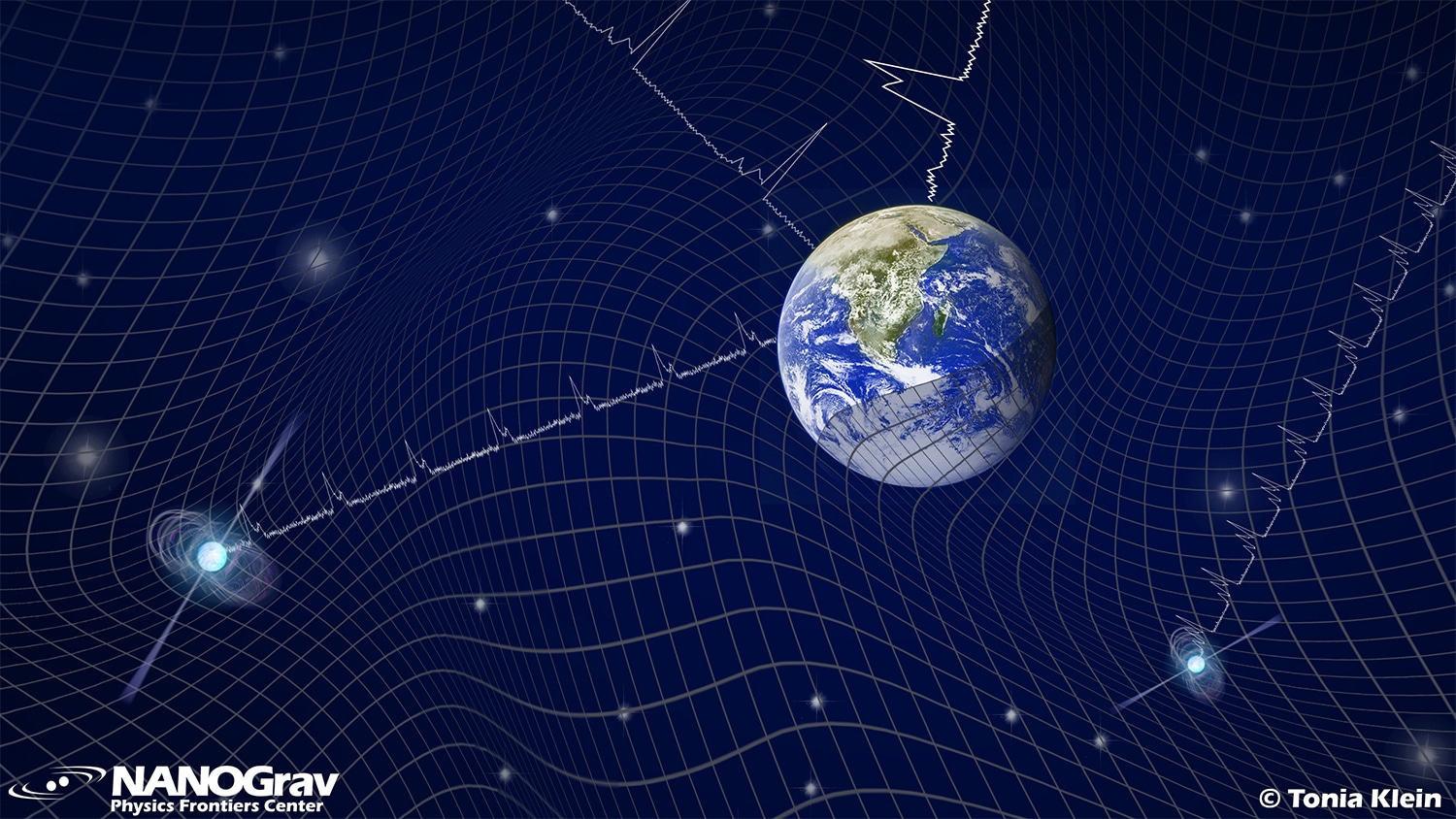
Recently, the NANOGrav Collaboration captured the first signs of very low-frequency gravitational waves- about 10-8 Hertz, which equates to approximately one oscillation per year. Scientists, who analyzed the data, hinted that the waves could point towards new physics beyond the Standard Model.
A new study announced that the signal is consistent with both a phase transition in the early universe and the presence of a field of highly light axion-like particles (ALPs). The last is considered as a promising possibility for dark matter.
The waves have a correspondingly large wavelength. Such waves are detectable via a large detector. As such, a detector is not possible here on Earth, the astronomers at NANOGrav use distant pulsars and their light signals as huge detectors.
Wolfram Ratzinger outlines the motivation behind their work: “Even though so far the data only provides us with a first hint of the existence of low-frequency gravitational waves, it is still fascinating for us to work with them. This is because such waves could be produced by various processes that occurred in the early universe. We can now use the data we already have to decide, which of these come into consideration and which do not fit the data at all.”
Scientists also took a gander at two possible scenarios that prompt the waves: Phase transitions in the early universe and a dark matter field of extremely light axion-like particles (ALPs). Phase transitions such as these occur due to the falling temperature in the primordial soup after the Big Bang and result in massive turbulences – however, like dark matter, they are not covered by the Standard Model.
Based on the data, scientists interpreted their results as follows: Perhaps slightly more probable is the early phase transition scenario.
According to Pedro Schwaller and Wolfram Ratzinger, they are able to work out particular possibilities based only on limited data proves the potential of their approach.
They noted, “Our work is a first, but important development – it gives us a lot of confidence that with more precise data we can draw reliable conclusions about the message gravitational waves are sending us from the early universe.”
Pedro Schwaller concludes, “Furthermore, we can already begin to pin down certain characteristics of the scenarios and put constraints on them, in our case the strength of the phase transition and the mass of the axions.”
Journal Reference:
- Wolfram Ratzinger et al. Whispers from the dark side: Confronting light new physics with NANOGrav data. DOI: 10.21468/SciPostPhys.10.2.047
Continue reading What can gravitational waves reveal about dark matter? on Tech Explorist.
0 comments:
Post a Comment